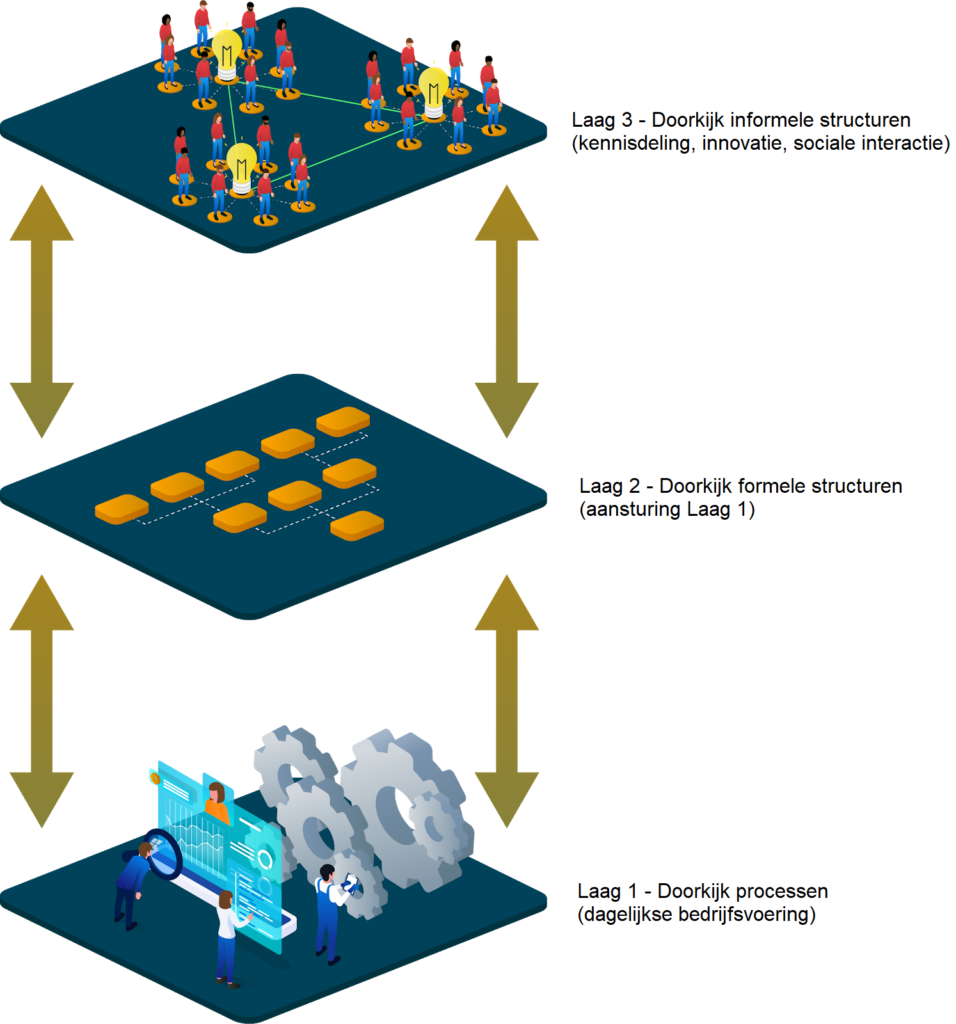Good decision-making is an art. At the individual level, this is already true. When working together, this only becomes more challenging. The larger the team or organization, the more complexity. So many people, so many perspectives working together to come up with a plan of action. So how do you ensure that each decision is better than the sum of all insights? And how do you design that decision-making effectively?
Why do you want to make decisions more effectively?
That every organization benefits from good decision-making is obvious. The benefits of good decision-making, in terms of savings potential, become even clearer when you look at the following figures:
- Managers in Fortune 500 companies collectively waste 500,000 days on ineffective decision-making methods (McKinsey, 2019).
- In some companies, senior managers spend up to 7,000 hours a year in committees and meetings. Team members spend some 300,000 hours a year preparing support materials to do so (The Economist, 2021).
- The average team wastes 20 hours a month due to syrupy decision-making processes and communication. That is 6 working weeks per year (Planview, 2020).
What immediate steps can organizations take to address this?
3 concrete measures toward more efficient decision-making
Measure #1: Establish clear and efficient decision-making processes
In general, there are three types of decisions: strategic, organizational and operational. Decision-making processes will therefore need to flesh this out. But that doesn’t mean it has to be complicated. Often it is unclear how decision-making runs or should run, and then you are sent from pillar to post. By thinking out the decision-making processes at the strategic, organizational and operational levels, you prevent a lot of trouble by creating clarity. And that clarity will also help those with good ideas find their way into decision-making.
Measure #2: Let the right people make decisions.
In Blog 2, we talked about the structure of an organization. It consists of three layers or “vistas” as shown in the figure below. As a reminder, the first layer is that of day-to-day operations and the interdependencies that go with them. The second layer is the hierarchical structure (organizational chart) of the organization. The third layer consists of the informal interactions between employees such as knowledge sharing, idea sharing and elaboration, and social interaction.
Often decision-making is ingrained high in Layer 2, the hierarchical layer. But will the right people always be involved in important decisions? For example, when it comes to strategic decisions (where are we going with our business?), these are often invested in Layer 2. By involving the absolute thought leaders from Layer 3 in decision making, the organization ensures that forward-thinking, innovative and thoughtful decisions are made with the right people.

© 2021 DL Network Analytics BV
Organizational and operational decisions are much closer to business operations. Here, then, the lower the better. Who else but the people actually engaged in day-to-day operations can assess what can be improved and how it can be improved. Not only are these people the right people to make these decisions, but it will contribute significantly to the sense of appreciation and connection to the organization.
For organizational decisions, which are more about the shape and structure of the organization, Layer 2 is the appropriate layer to ensure quality and consistency across the organization.
Measure #3: Give meetings an explicit purpose
Meetings, no agenda is complete without them, but they are by no means all useful to everyone. The number of meetings continues to rise, while 37% of employees believe that unnecessary meetings are the biggest cost to their organization (Doodle, 2021). After all, it is not only the meetings themselves that take time, but also their preparation. If you then sit there for no real reason, it can quietly be called a waste of time.
37% of employees believe unnecessary meetings are the biggest cost to their organization
Clear and efficient decision-making processes can already drastically reduce the number of meetings required. Giving each meeting an explicit goal can increase efficiency even more. What is the purpose of the meeting? When is the meeting successful? What decisions need to be made? It better be clear.
Network analysis for better decisions
Organizational network analysis (ONA) can be used to map decision-making processes, including the most influential people in decision-making. Combined with the insights from the different views of the organization, clear and efficient decision-making processes can be developed.
These decision-making processes involve the right people to make the best use of the best consultants available, namely your own employees.













